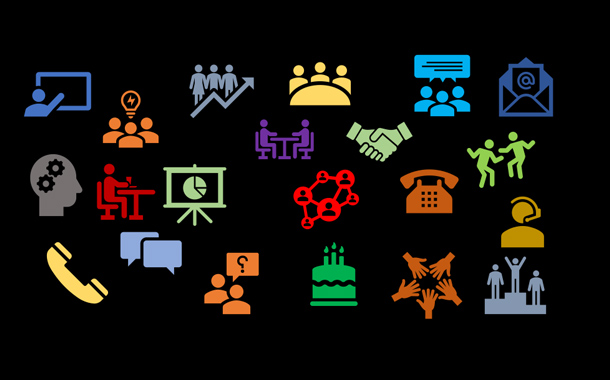It’s been about six months since the U.S. reported its first coronavirus case, and we’re at a confusing point in time where some organizations are beginning to return to the office, others are staying put at home, and many more are somewhere in between. We can assume that a majority of work — between colleagues, partners and customers — will continue to be conducted remotely both in the near and long term, as the future of work will likely include a flexible balance.
But many employees are growing weary of certain elements of remote work. To make remote work a sustainable option and avoid burnout, these concerns need to be addressed quickly. Judging by the many news headlines (and my personal experience), there is a consensus that the workforce is deeply fatigued by constant video meetings.
I will first say that I work at LogMeIn, home of GoToMeeting, and I also spent several years at BlueJeans and Blackboard, working on video meeting technology. – I have profound passion and respect for the benefits of this technology. It’s clear that video conferencing has made the transition to 100 percent remote work feasible in ways people didn’t imagine. Yet, I also believe that too many video meetings leaves us feeling drained.
As everyone is working from home, meetings and communication with other remote workers is a crucial use of our time; however, for many companies, this has translated into days of back-to-back, scheduled, structured meetings, which is a mistake. People need to choose the right type of communication for the right goals. We have been using a single tool in our toolbox, and when all you have is a hammer, everything looks like a nail.
Some companies are now talking about making their meetings more effective with better “meeting hygiene.” I am starting to hear a chorus from many companies, such as “every meeting should have an agenda, and stated goals, and that will make our meetings better.” For structured meetings, this is true. Whether it’s the Amazon model of coming to a meeting with a pre-read where the meeting organizer lays out the information and desired outcome, or Patrick Lencioni’s “Death By Meeting” model, on which I have relied for over 10 years, teams and companies do need to set up norms, culture, and processes to have effective scheduled meetings across the organization.
However, this in itself will not solve the video meeting malaise. Instead, people need to choose the right type of meeting to solve their communication goals. – In addition to ‘formal,’ scheduled, video meetings, we need to also deliberately host more casual, unstructured meetings.

What is an unstructured meeting?
- It’s the 15 minutes before or after a meeting in the office where colleagues sit around a table talking.
- It’s the over-the cubicle-wall conversation while working on another project.
- It’s the unexpected conversation with a person from another part of the company, who you run into in the lunch room or the coffee machine.
- It’s the team celebration to get together to chat.
- It’s the office hours or virtual cafe with no agenda.
- Or even just an open video call where a whole team can site and work, with each other on screen, just like sitting in cubes. next to each other, with an occasional wink or comment.
Topics of discussion could include others’ personal work, a team project, insights from the meeting they just attended and more. It’s the free thinking, collaboration moments that are difficult to organically replicate while remote.
While in today’s remote work landscape these unstructured meetings are not as easy as bumping into a colleague by the office water cooler, they provide a way to connect teams and colleagues outside of the rigid confines of regular meetings.
A few guidelines I implement as part of the unstructured meetings I host:
- Timing is flexible. Attendees can stay for as long as they want/have time for in a given day; 15 minutes, 30 minutes or the full hour. It’s up to them. No questions asked.
- Vocal participation isn’t mandatory. It’s okay to be silent and just listen. Often during meetings, attendees feel pressure to speak-up to prove they’re paying attention. That’s not the point of unstructured meetings.
- There doesn’t need to be an agenda. If there is, it should be an open list of topics for discussion but mostly the time is for whatever team members want to use it for. The best unstructured meetings are when one topic leads to another and the team ends up somewhere new.
- It’s fine to do other work during the meeting. Sometimes that’s the point – providing a space for group work where team members can collaborate on a project in the same way they might in a conference room in the office.
If these guidelines sound counterintuitive to most meeting policies you’ve seen, that’s because they are. That’s the goal. Think of these meetings as an opportunity for employees to feel comfortable sharing questions, concerns and ideas that they might not bring up during typical meetings.
Unstructured meetings won’t solve all remote work challenges, but they are a helpful tool in making remote work sustainable for the long term. I’ve had these meetings with teams for years and I continue to host them because I find the sessions so valuable.
I’m curious what remote challenges you’re facing right now and how your teams are addressing them. It’s certainly helpful to learn from others as we all face a learning curve. Comment below with your thoughts.





